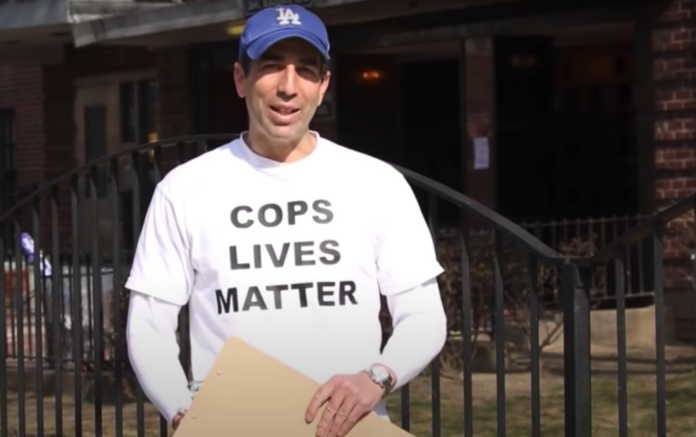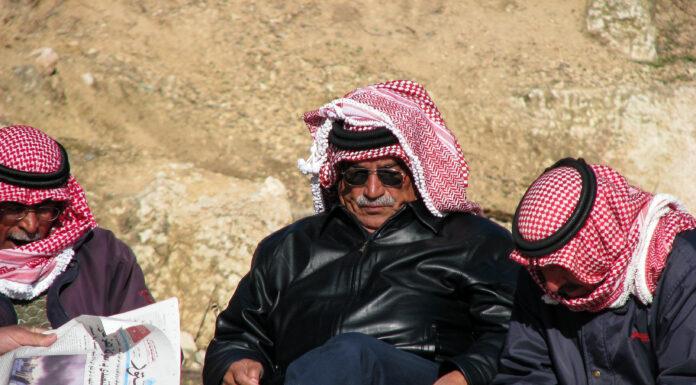Last year’s violent racial protests were “freedom riots.” Policing is “a vestige of slavery.” All prisons “should be abolished.”
These are among the sentiments expressed by Black Lives Matter leaders and activists in Inside Black Lives Matter: A BLM Exposé, a new short documentary by filmmaker Ami Horowitz.
Inside Black Lives Matter is a 17-minute survey of the rise and impact of the Black Lives Matter movement, including its connection to anti-Semitism. “I wanted to find out what the organization truly stands for,” Horowitz says at the beginning of the digital short.
PROVOCATIVE QUESTIONS
Horowitz, a 47-year-old Orthodox Jew and father of two, has described himself as “right of center, [but] not reflexively so.” He attended Jewish schools while growing up in Los Angeles, studied for a year at Hebrew University in Jerusalem, and is an alumnus of the University of Southern California.
He was working as an investment banker at Lehman Brothers in 2006 when he conceived the idea of creating a film exposing corruption and hypocrisy within the United Nations.
Horowitz has no background in filmmaking, but he follows the journalistic style of left-wing documentarian Michael Moore, whose films consist largely of Moore confronting individuals and asking provocative questions.
Indeed, the New York Daily News called Horowitz’s debut documentary, the 93-minute “UN Me,” a “Michael Moore-style exposé of the United Nations.”
Horowitz used a similar approach in a subsequent series of short videos, some of which were aired on Fox News. One featured interviews with “Occupy Wall Street” activists explaining their affinity for Marxism, anarchy and drugs. In another, he tested the reactions of students at the University of California-Berkeley to Horowitz first making an anti-America speech and waving an ISIS flag, then later giving a pro-Israel speech and waving an Israeli flag.
Horowitz’s 2016 film “Stockholm Syndrome” explored links between rising crime in Sweden and Muslim immigration to that country. The film attracted international attention when excerpts were shown on “Tucker Carlson Tonight” and publicly cited by then-president Donald Trump.
“YOU GOTTA HAVE VIOLENCE”
Following the killing of George Floyd by a Minneapolis police officer in May 2020, Black Lives Matter rose to national prominence by organizing more than 10,000 protest rallies and marches across the country. The New York Times estimates that at least 15 million Americans took part in such demonstrations during the spring and summer.
According to the left-leaning group US Crisis Monitor, 633 of the protests began peacefully but then evolved into violent riots, vandalism, mass looting and assaults on police officers. Some conservatives believe the number of riots was larger than that estimate.
“During these riots, dozens of people were killed or injured, thousands of business and properties were looted and torched, many of them minority-owned, Horowitz explains in the film, over footage of rioters wrecking and looting stores. “The total losses for these businesses is estimated to be up to $5 billion, with the majority of these businesses not insured for this type of loss. The devastation of these mostly-minority neighborhoods will be felt for years.”
Over the past year, Horowitz traveled from city to city, interviewing hundreds of Black Lives Matter leaders and supporters who took part in last year’s unrest. The travel team typically consisted of Horowitz, a cameraman, a sound man, an assistant and sometimes also a bodyguard.
Horowitz did not tell interviewees who he really was. “I had to be undercover,” he explained in an exclusive interview with Ami. “No one in BLM would have been willing to speak with me if they knew who I was. The one time that I was recognized I was viciously attacked.”
He was not deterred by the numerous threats, implicit and explicit, which he received during the course of the project. “Being threatened at a BLM rally or riot is par for the course,” he said. “At every event, I was initially warned that my coverage better be positive. They would often send a ‘minder’ along with me who would listen to my conversations. During several protests, people threatened me with violence if they caught me filming the ‘wrong’ things, and in Portland I was attacked with broken glass.”
BLM VS. THE POLICE
“While most of those marching in Black Lives Matter protests were not involved in the rioting across the country, there were very few among the hundreds of protesters I spoke to who wouldn’t in some way justify the riots on the basis of perceived institutional racism or actual historical wrongs,” Horowitz remarks at the beginning of his film.
“Some destruction and looting kind of sends the message to people, and breaking their [property] is justified,” one masked protester tells Horowitz. “When we take it back, will we burn it down?” another asks rhetorically, then emphatically answers his own question, “Yes! We’re getting back what’s ours! You won’t give it up, okay, you ain’t having it no more!” A young woman tells Horowitz, “Yes, you gotta have violence—there’s four levels of protest, and looting and riots is part of being protesting.”





















